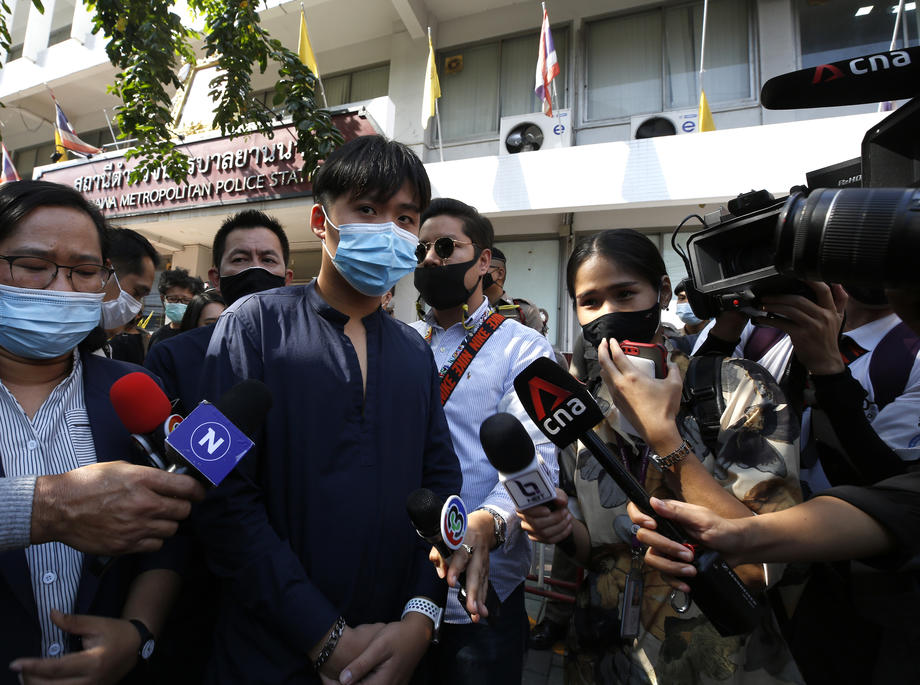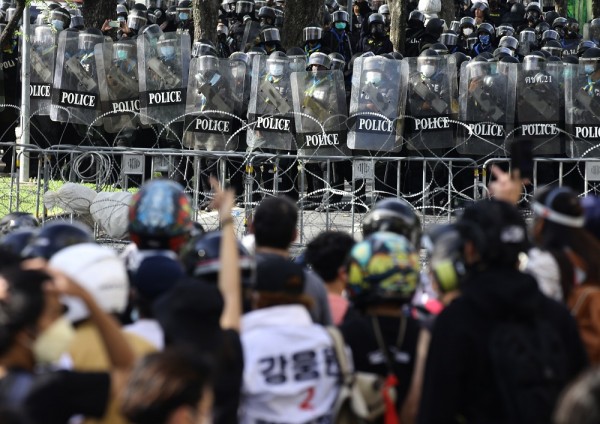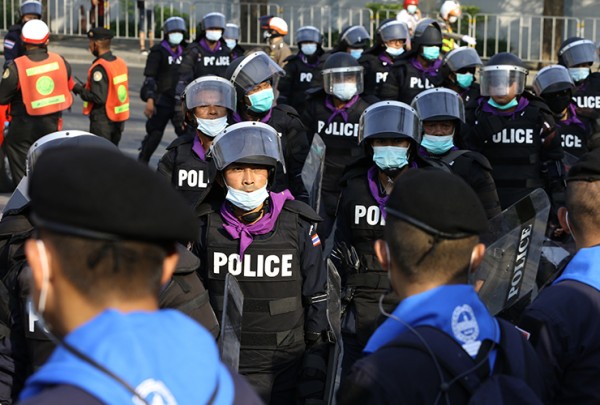As pro-democracy protests continue in Thailand, the authorities have reached back to lese-majeste laws to charge protest leaders for their speeches. Meanwhile, Thai media have reached for innovative ways to circumvent the crackdown and keep reporting the news, Jacqui Park writes.
Freedom of expression and press freedom have come under pressure as pro-democracy protests continue in Thailand. Recently, Thai authorities have resurrected the country’s lese-majeste law. So far, 12 protest leaders have been charged under the law, which carries heavy prison sentences.
The law had been in abeyance since 2018, following local and international criticism about abuse of the provisions, with the government agreeing to pre-vet charges. As recently as June, Prime Minister General Prayut Chan-O-Cha said that the king had asked that the law not be used.
However, in mid-November, Prayut announced that “all laws and all articles” would be used in an increasing crack-down against protestors seen as escalating conflict.
About a week later, 12 protest leaders were summoned by police to hear the lese-majeste charges laid against them. Once the charges have been read, the leaders have been released pending court hearings.
It marks a serious escalation of the struggle for freedom of expression that has marked the protests in Thailand. The protestors are demanding that the monarchy be reformed by limiting the king’s political power, that Prime Minister Prayut resign and that new elections be called.
It came after police turned to water cannon, tear gas and pepper spray to break up protests after which the spokesperson for United Nations Secretary-General António Guterres “expressed concern about the [human rights] situation in Thailand.
Journalists have been also been caught up in the crackdown. Four Thai-language digital media outlets were blocked by the authorities in mid-October. These voices became the target for government crackdown under the emergency decree announced by the government of Prime Minister General Prayuth Chan-ocha.
The authorities moved quickly to use the decree to ban three Thai-language digital media: The Reporters and The Standard, which are largely builton Facebook, as well as Prachatai. They have also banned Voice TV from both terrestrial broadcasting and digital streaming. The bans are seen as an attempt to deprive the protests of oxygen by blocking images of them, including live streams and selfies of protestors.
Reporting the protests as they happen
As the protestors have used memes and cosplay, from the Hunger Games three-finger salute to inflatable yellow ducks, to bypass the crackdown, journalists have responded to the political moment with innovative approaches powered by the mobile web, video and social distribution.
Facebook Live is one example. Voranai Vijaka, a journalist and founder of thisrupt, described the platform as journalism meets reality TV. “With Facebook Live, the audience savors the pleasure (or the horror) of “anything can happen” because the camera is right there”, he said. “Anything can happen with a few seconds delay, and the only way to miss it is a poor internet connection.”
Another key channel is English-language media, which are building a reporting space both online and on mobile that talks particularly to the younger, educated audience who have benefitted from two decades of embedded English-language teaching in the Thai education system. It also reflects a different journalistic style, with Thai practice to lead the reader through to key points lower in the story, while English practice is to open with the main take-away.
The prominent new media digital voices in English include Khaosod English (part of the Matichon group), thisrupt, Thai Enquirer and Pratchatai as well as the regional digital voice in the north-east, The Isaan Record.
Despite the crackdown, Thai language digital news (including the Thai edition of bi-lingual sites) is also growing rapidly. Probably the most successful example is The Standard, part of a multi-media news agency launched in 2017. It’s digital offering employs about 20 journalists.
New spaces for free expression are springing up on other platforms as well, as Pravit recently told the Foreign Correspondents Club of Thailand: “On social media, the Facebook group The Royalist Market Place has nearly 2 million members discussing all things critical and negative about the monarchy, some factual, others more like rumours or baseless allegations. They have created an alternative virtual world where royalists are not welcomed.”
On Twitter, he pointed out, exiled historian and monarchy critic Somsak Jeamteerasakul (@somsakjeam) has over 738,000 Twitter followers while former Reuters correspondent Andrew MacGregor Marshall (@zenjournalist) has about 261,000.
While the English-language news sites have a clear sense of their journalistic vision, and are grappling with the challenges and opportunities of the current moment, all are searching for a business model that will outlast the current crisis. They employ between five and ten journalists, each with a different positioning in the growing market.
Khaosod English is the English-language digital arm of the for-profit Matichon group which publishes the leading Thai-language quality broadsheet (Matichon) and Khaosod (“live news”) a Thai-language tabloid style newspaper (in both print and digital). The English-language website was launched in 2013 as a step into the market for that language. It is advertising funded, and relies on the broader company for support.
The Thai Enquirer has launched in the past year focusing on politics and culture. It is supported through initial investment and some advertising.
The oldest of the new media is Pratchathai, launched in both Thai and English in 2004 out of the NGO community. It continues to draw support from grants and philanthropy and through some crowdfunding from its base.



